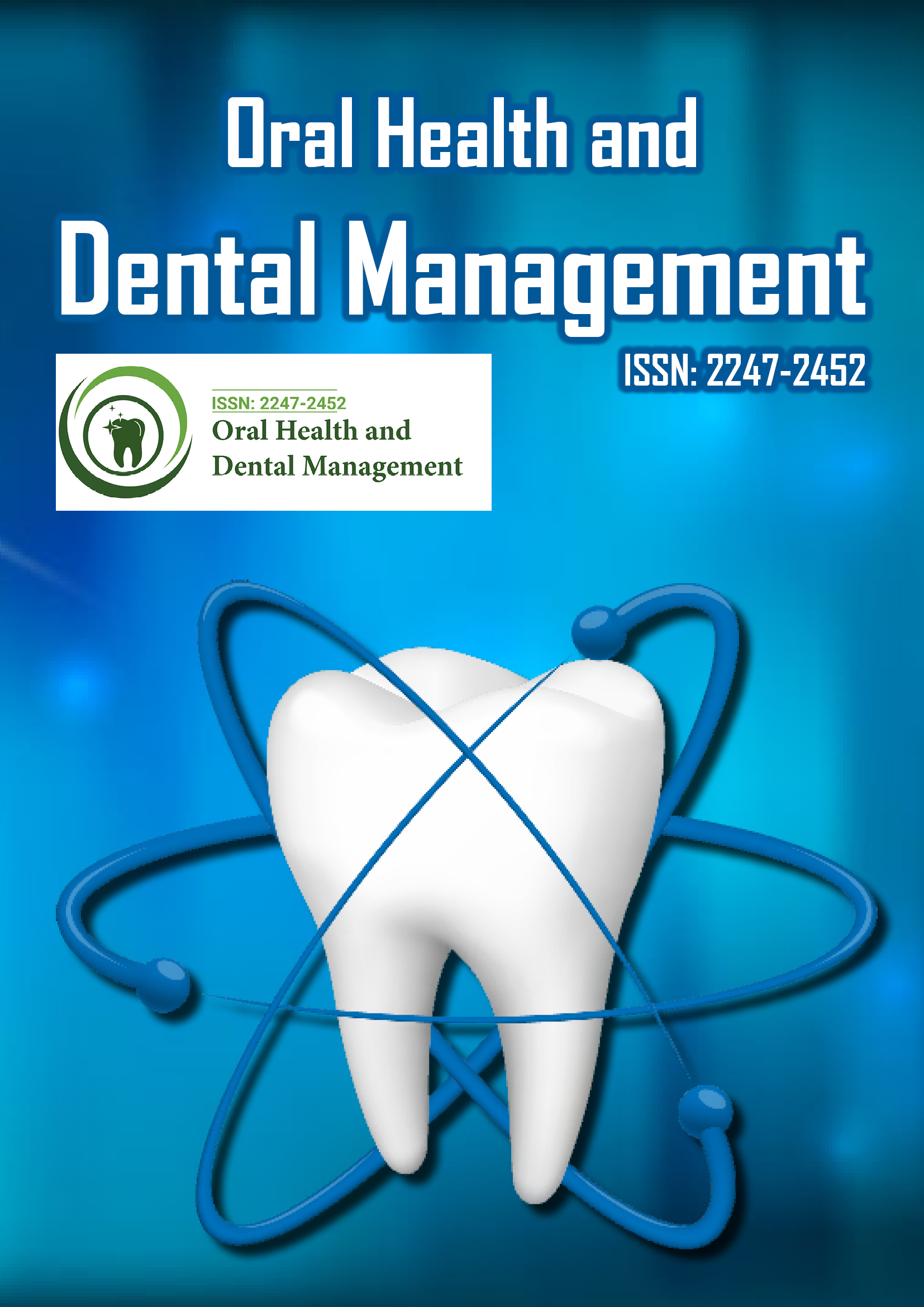Indexed In
- The Global Impact Factor (GIF)
- CiteFactor
- Electronic Journals Library
- RefSeek
- Hamdard University
- EBSCO A-Z
- Virtual Library of Biology (vifabio)
- International committee of medical journals editors (ICMJE)
- Google Scholar
Useful Links
Share This Page
Journal Flyer

Open Access Journals
- Agri and Aquaculture
- Biochemistry
- Bioinformatics & Systems Biology
- Business & Management
- Chemistry
- Clinical Sciences
- Engineering
- Food & Nutrition
- General Science
- Genetics & Molecular Biology
- Immunology & Microbiology
- Medical Sciences
- Neuroscience & Psychology
- Nursing & Health Care
- Pharmaceutical Sciences
Commentary - (2025) Volume 24, Issue 1
The Role of Prosthodontics in Restorative Dentistry: Techniques and Outcomes
Daniel Diego*Received: 24-Feb-2025, Manuscript No. OHDM-25-29318; Editor assigned: 26-Feb-2025, Pre QC No. OHDM-25-29318; Reviewed: 12-Mar-2025, QC No. OHDM-25-29318; Revised: 19-Mar-2025, Manuscript No. OHDM-25-29318; Published: 26-Mar-2025, DOI: 10.35248/2247-2452.25.24.1134
Description
Prosthodontics is a specialized field of dentistry that focuses on the design, creation, and fitting of artificial replacements for teeth and other parts of the mouth. This branch of dentistry plays a crucial role in restoring function, comfort, aesthetics, and overall oral health in patients who have lost or damaged teeth due to decay, trauma, disease, or congenital conditions. Prosthodontics not only improves the ability to chew and speak but also contributes significantly to a patient’s self-esteem and quality of life. The scope of prosthodontics covers a wide range of dental restorations, including removable and fixed prostheses, as well as maxillofacial prosthetics for patients with facial defects. The field can be divided broadly into three main categories: fixed prosthodontics, removable prosthodontics, and implant prosthodontics.
Fixed prosthodontics involves restorations that are permanently attached to the teeth or dental implants. Common fixed prostheses include crowns, bridges, and veneers. Crowns are caps placed over damaged or decayed teeth to restore their shape, strength, and appearance. They are often made from materials like porcelain, ceramic, metal alloys, or combinations thereof. Bridges are used to replace one or more missing teeth by anchoring artificial teeth to adjacent natural teeth or implants. These restorations not only restore the ability to chew but also prevent shifting of neighboring teeth, which can lead to bite problems and further tooth loss.
Removable prosthodontics includes devices such as complete and partial dentures. Complete dentures are used when all the teeth in an arch are missing, while partial dentures replace one or more teeth and rely on the remaining natural teeth for support. These appliances are custom-made to fit the patient’s mouth and can be taken out for cleaning and maintenance. Removable dentures help restore oral function and facial aesthetics but require patient adaptation and good oral hygiene to prevent complications such as irritation or infection.
Implant prosthodontics is an increasingly popular and effective treatment option involving dental implants titanium posts surgically placed into the jawbone to act as artificial roots.
Once the implant integrates with the bone, a crown, bridge, or denture can be attached, providing a stable and durable restoration that mimics natural teeth. Implant-supported prostheses offer improved comfort, function, and longevity compared to traditional dentures or bridges and help preserve jawbone health by stimulating bone maintenance. Impressions must capture accurate details of the patient’s mouth to fabricate prostheses that are comfortable and effective. The color, shape, and size of artificial teeth are carefully matched to the patient’s natural dentition to achieve a harmonious and natural appearance.
Prosthodontics also extends to maxillofacial prosthetics, which involves the rehabilitation of patients with defects or deformities resulting from cancer surgery, trauma, congenital conditions or disease. This highly specialized area uses prosthetic devices to restore the appearance and function of facial structures such as the nose, ear, eye, or parts of the jaw. Maxillofacial prosthodontists work closely with medical teams to improve the quality of life for these patients.
Conclusion
Prosthodontics is a vital dental specialty focused on restoring the form and function of teeth and related oral structures through a variety of fixed, removable, and implant-supported prostheses. It combines art and science to create restorations that not only look natural but also improve oral health and quality of life. With ongoing technological advancements and interdisciplinary collaborate on, prosthodontics continues to evolve, offering innovative solutions for patients facing complex dental challenges. Through personalized care and meticulous treatment, prosthodontists play a critical role in helping patients regain a healthy, functional and attractive smile.
